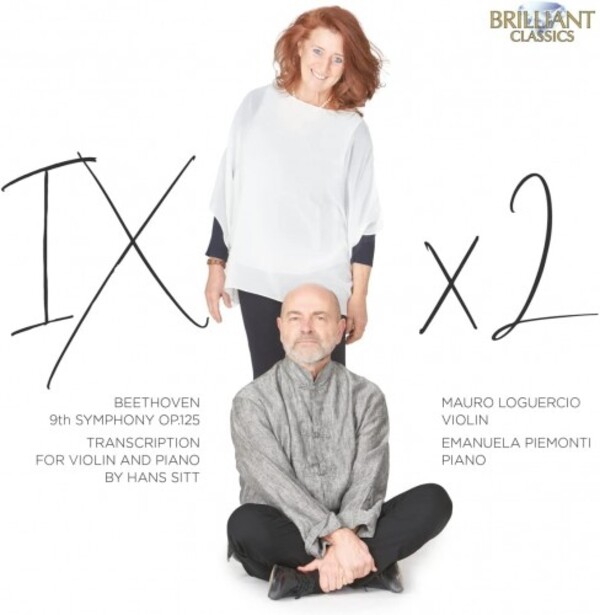
Beethoven - IX x2: Symphony no.9 (arr. H Sitt for violin & piano)
£9.45
In stock - available for despatch within 1 working day
Despatch Information
This despatch estimate is based on information from both our own stock and the UK supplier's stock.
If ordering multiple items, we will aim to send everything together so the longest despatch estimate will apply to the complete order.
If you would rather receive certain items more quickly, please place them on a separate order.
If any unexpected delays occur, we will keep you informed of progress via email and not allow other items on the order to be held up.
If you would prefer to receive everything together regardless of any delay, please let us know via email.
Pre-orders will be despatched as close as possible to the release date.
Label: Brilliant Classics
Cat No: 96711
Format: CD
Number of Discs: 1
Genre: Chamber
Release Date: 23rd June 2023
Contents
Artists
Mauro Loguercio (violin)Emanuela Piemonti (piano)
Works
Symphony no.9 in D minor, op.125 'Choral' (arr. Hans Sitt for violin and piano)Artists
Mauro Loguercio (violin)Emanuela Piemonti (piano)
About
Astonishing in his catalogue, however, is the enormous number (and weight) of his transcriptions of the most important 19th-century symphonic works for the duo of violin and piano. Sitt transcribed all (!) of Beethoven's nine Symphonies, already a cyclopean feat in itself, but also two by Haydn, one by Mozart, Schubert's two best-known (the Unfinished and Ninth), two by Mendelssohn and one by Schumann. This is a labour of unimaginable proportions, if one thinks of the difficulty of distilling for violin and piano these scores of vast proportions, entailing thousands of choices to be made in each bar, and again bar after bar.
It is precisely in Sitt’s choice of target ensemble that his transcriptions stand out from those around him, indicating his purpose as distinct from that of his peers. The clear majority of transcriptions of that era were for piano four-hands, because of the impression that dividing the piano between two performers halved the demands on piano technique and that the possibility of register-filling was more apt for the broad spectrum of an orchestra.
Sitt’s decision to transcribe, instead, for violin and piano allows him to make the violin a part among parts, to immerse it in the (very rich) piano fabric, sometimes giving it a thematic role and sometimes not, a display of compositional virtuosity which naturally requires the two performers to find the right balance between the sonic weights. It is also astonishing to say, but if one listens to it many times, Sitt's transcription of the Ninth ends up revealing aspects of the original score of which one had never been aware: the polyphonies of the Scherzo emerge with formidable cleanliness, as do the endless imitations and motivic transformations of the first movement. In the Fourth Movement, distillation of the original alternation of vocal, choral and orchestral-only moments to violin and piano alone makes it clear that the variety of character, the shifting from dance to march, from chorales to fugati, from recitatives to arias, is fundamentally a series of variations on the well-known theme, set at the beginning monodically and sotto voce.
Sitt's transcription of the Ninth, therefore, in addition to being splendid to listen to, if only in that obvious sense of the formidable challenge it poses to the performers, thus becomes an important and unexpected tool for delving deeper into the structure of the Beethovenian masterpiece. And for this we shall forever have to thank him.
Error on this page? Let us know here
Need more information on this product? Click here